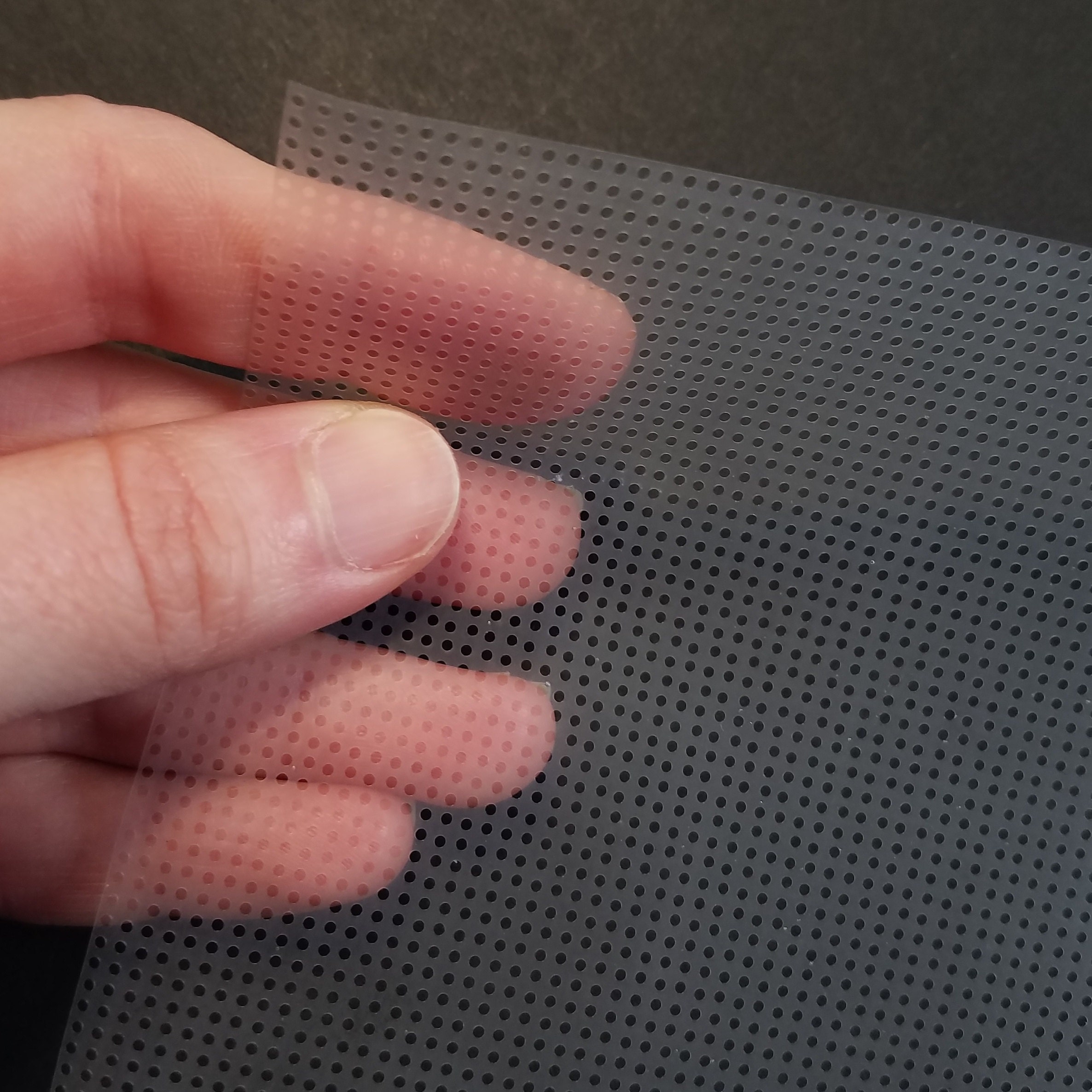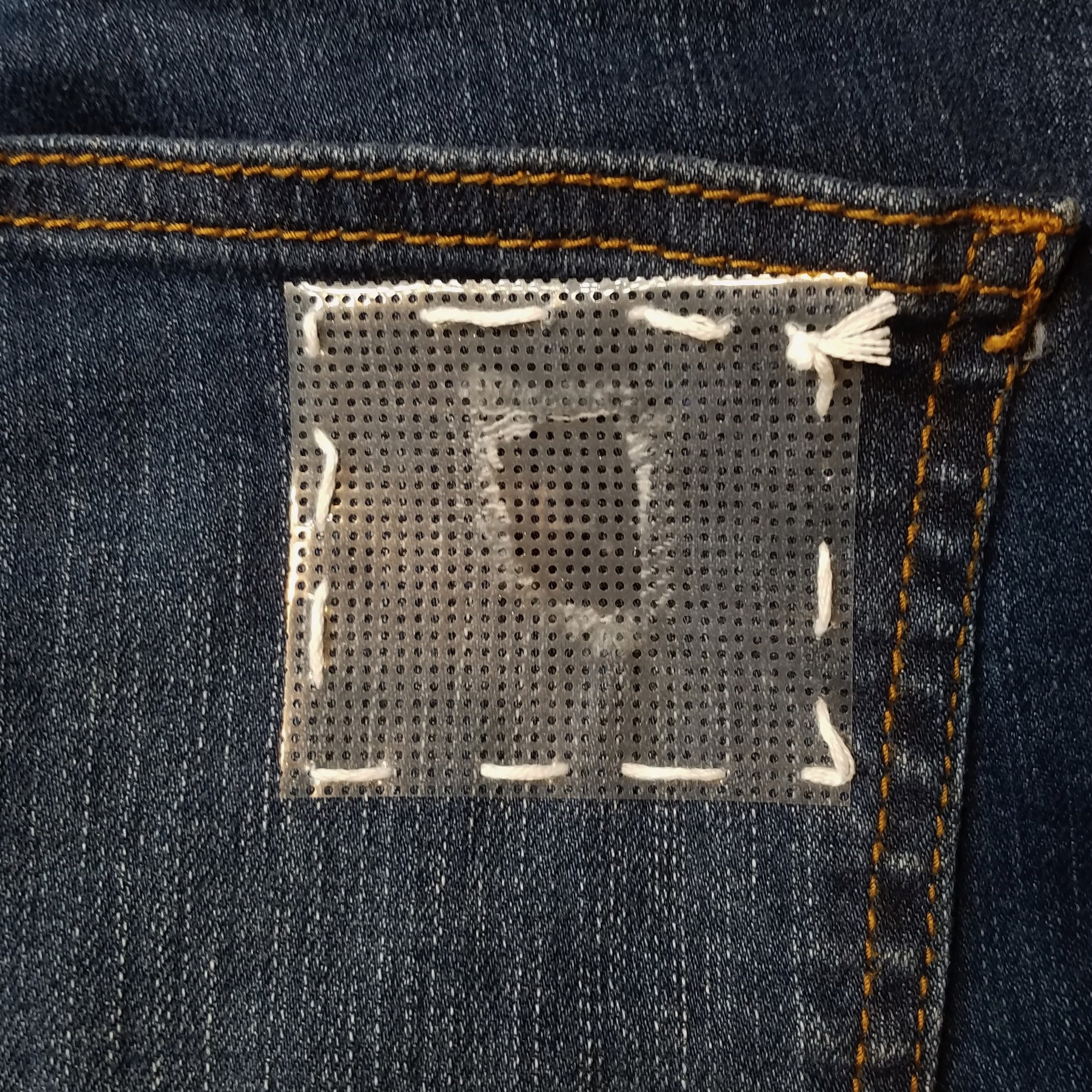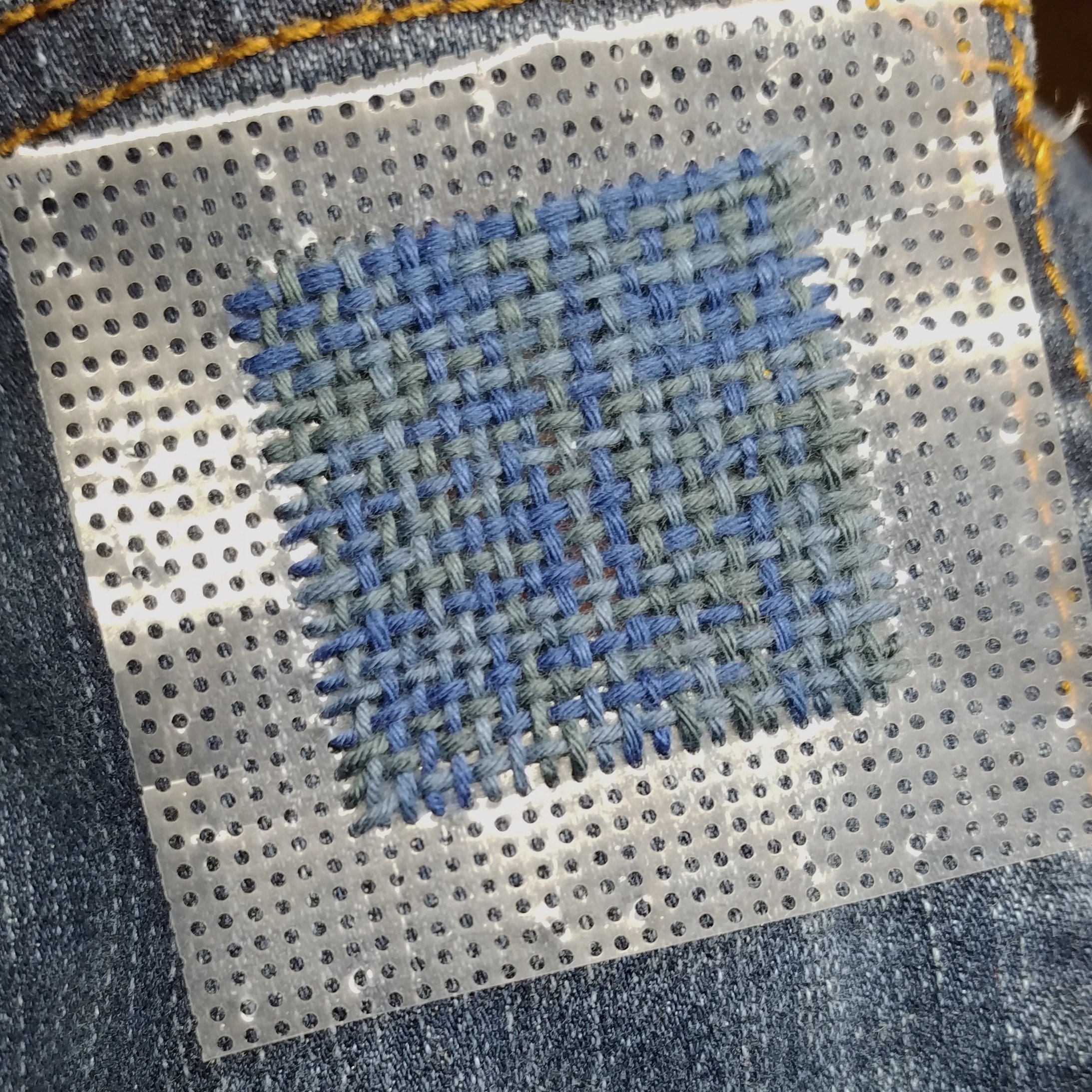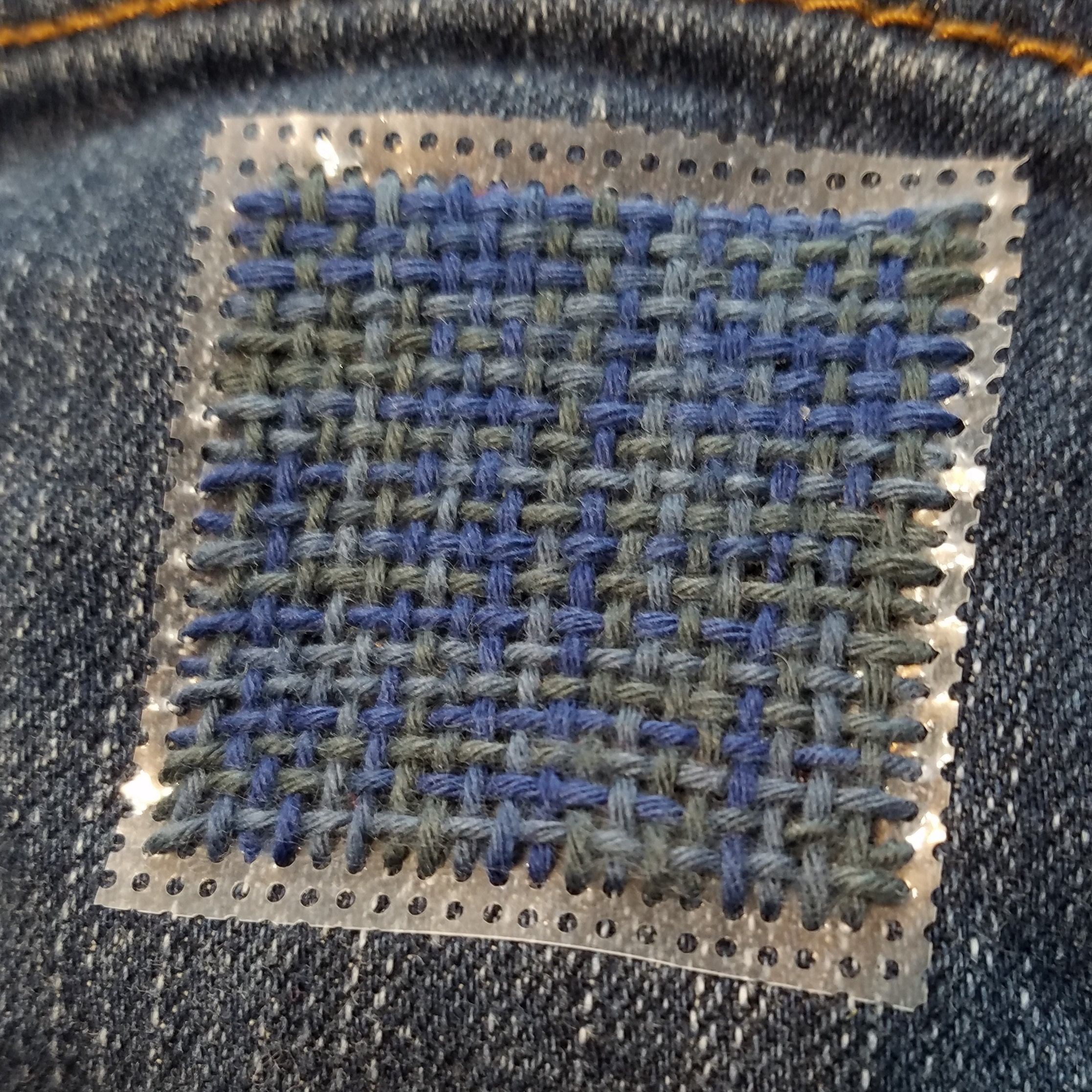There are a number of wonderful small looms available for mending holes in knit and woven fabrics. However, these can be difficult to find and may be a little expensive for those who only have one or two holes that they wish to mend. A wonderful alternative is water soluble embroidery canvas. This canvas was created for counted cross stitch and has a supportive structure that washes away after you have finished your mending project.
I currently carry DMC brand canvas. The canvas is opaque, flexible and can easily be cut to the size that is required for your mending project.

To weave a patch over an existing hole in a garment simply cut out a section of the DMC canvas that is larger than the hole. The canvas will need to be secured to a section of the garment fabric that will not fray or rip further. In certain fabrics you may want to add some stitching around the hole to reduce fraying.

After you position the canvas over the hole, flatten the area to be patched as much as possible and secure the canvas with some stitching around the edges.
Now you can begin the weaving process. I used Olympus brand sashiko thread for this repair. Embroidery thread or lighter weight yarns can also be used as long as it fits through the holes in the canvas.
Remember that you want to have a stable patch therefore the patch must be in fabric that is not fraying or otherwise damaged. To begin, knot your thread and bring the needle up through the fabric and a hole in the canvas' bottom corner. Create your first warp thread by bringing the needle back down through a hole in the canvas' top corner and out through the underside of the fabric again. Bring the needle up through the square in the canvas next to the hole that you just used and down the hole at the bottom of the patch, next to the hole that you started at. Keep the thread tight but not too tight to cause the canvas to buckle. Continue This process until you have the patch as wide as you want. Remember that the patch will "draw in" as you weave so make it a little larger than you want.

Now, begin the process of weaving in the weft (left to right) thread. Starting in one corner bring the thread up through the fabric and the hole in the canvas. Turn the needle around and use the eye to weave through the vertical warp threads. Go under one thread and over the next until you have reached the last warp thread. Pull your needle out, drawing the thread through the warp threads and then go down through the canvas hole and fabric and back up through the fabric and canvas at the hole alongside the one you went down. Now begin weaving the thread through the vertical weft threads again. Take care to start the weave pattern in the opposite way you ended it. So, if your vertical warp thread has the horizontal weft thread OVER it then make sure to go UNDER it this time. Continue weaving in your thread to make a woven patch.

Now, cut away the excess canvas and remove it by washing the garment in either the washing machine or by hand.


After washing you will notice that the patch "draws in" a little. If this is something you would like to avoid you can try weaving the patch a little looser or air drying the garment. Machine drying sashiko thread will make it shrink a little because it is a cotton thread.
This particular patch was done on my favorite pair jeans and has now been washed and machine dryed many times. The patch is still strong. If I was patching an area that gets a lot of wear, like the knees, then I would have added some fabric under the hole to reinforce it.
This repair technique can be used on many types of fabrics and is especially good for knit fabrics. The patch can virtually disappear if the right weight and color of thread is used or contrasting thread colors can be used to make a visible patch. Round, rectangle and even heart shaped patches can be created by altering the length of the vertical warp threads. Different weights of thread would also create a beautiful contrast.

